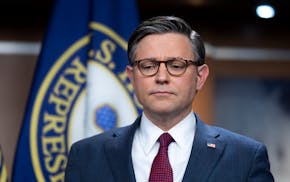WASHINGTON, D.C. – Congress never officially takes a vacation.
Rather than breaks, House and Senate calendars refer to time away from D.C. as district or state "work periods."
Right now, lawmakers are in the midst of the Memorial Day Work Period, which began Friday and stretches through June 3. July's Independence Day Work Period and the five-week-long Summer District Work Period in August and September will soon follow.
Lawmakers stick with the nomenclature even though many use the breaks to travel overseas with congressional delegations, around the country to raise campaign cash or take the occasional vacation outside their districts or states, in the case of senators.
Still, University of Michigan political scientist Michael Heaney argues that "work period" is "a better description of what's going on."
Members will spend time this week greeting voters on Memorial Day parade routes, huddling with business leaders and popping in at coffee shops to shore up support and take the pulse of their districts.
The campaign cycle never stops churning, so politics won't grind to a halt just because members of Congress aren't plying their trade on Capitol Hill, observers say.
"There really is no substitute for members spending time in their districts," said Sarah Binder, a senior fellow at the Brookings Institution and professor of political science at George Washington University, both in Washington, D.C.
"You have to be on the ground understanding what makes your district tick."
Work away from Congress
During the first 100 days of the current Congress, the U.S. House spent 41 days in recess.
But members often have longer, more demanding workdays in their districts than in D.C., Heaney said.
As part of a yearlong congressional fellowship, Heaney shadowed former Michigan Democratic Rep. Bart Stupak during a congressional recess.
While he was back in his district, Stupak's days began before 8 a.m. and ended after 9 p.m., making speeches, attending fundraisers and listening to constituents, not all of whom are supporters.
"The days are long, they meet dozens of people and they've got to find a way to relate to just about anybody that will approach them," Heaney said. "It's very hard work."
Beyond the obvious duty of connecting with residents, politicians know that being visible has benefits come election time.
U.S. Sen. Amy Klobuchar has made a point to visit all 87 Minnesota counties, from Aitkin to Yellow Medicine, during each year of her Senate term. She often covers wide swathes of the state during Senate "work periods."
On Monday, she plans to attend four Memorial Day events, beginning with a ceremony at Fort Snelling at 9:30 a.m. and ending with a flag presentation at 6:30 p.m. in Le Center in Le Sueur County.
A recent Public Policy Polling survey cited Klobuchar as one of eight U.S. senators with job-approval ratings above 60 percent.
"People like to vote for people they're familiar with," Binder said. "Familiarity drives greater favorability ratings."
Like Klobuchar, the remaining members of the state's congressional delegation likely will attend ceremonies honoring men and women who died while serving in the U.S. Armed Forces.
It's a time of year when residents expect to see their members of Congress.
"They're firming up their political support," Binder said.
Finding an apartment may be easier for California pet owners under new legislation
Jury selection could be nearing a close in Donald Trump's hush money trial in New York
